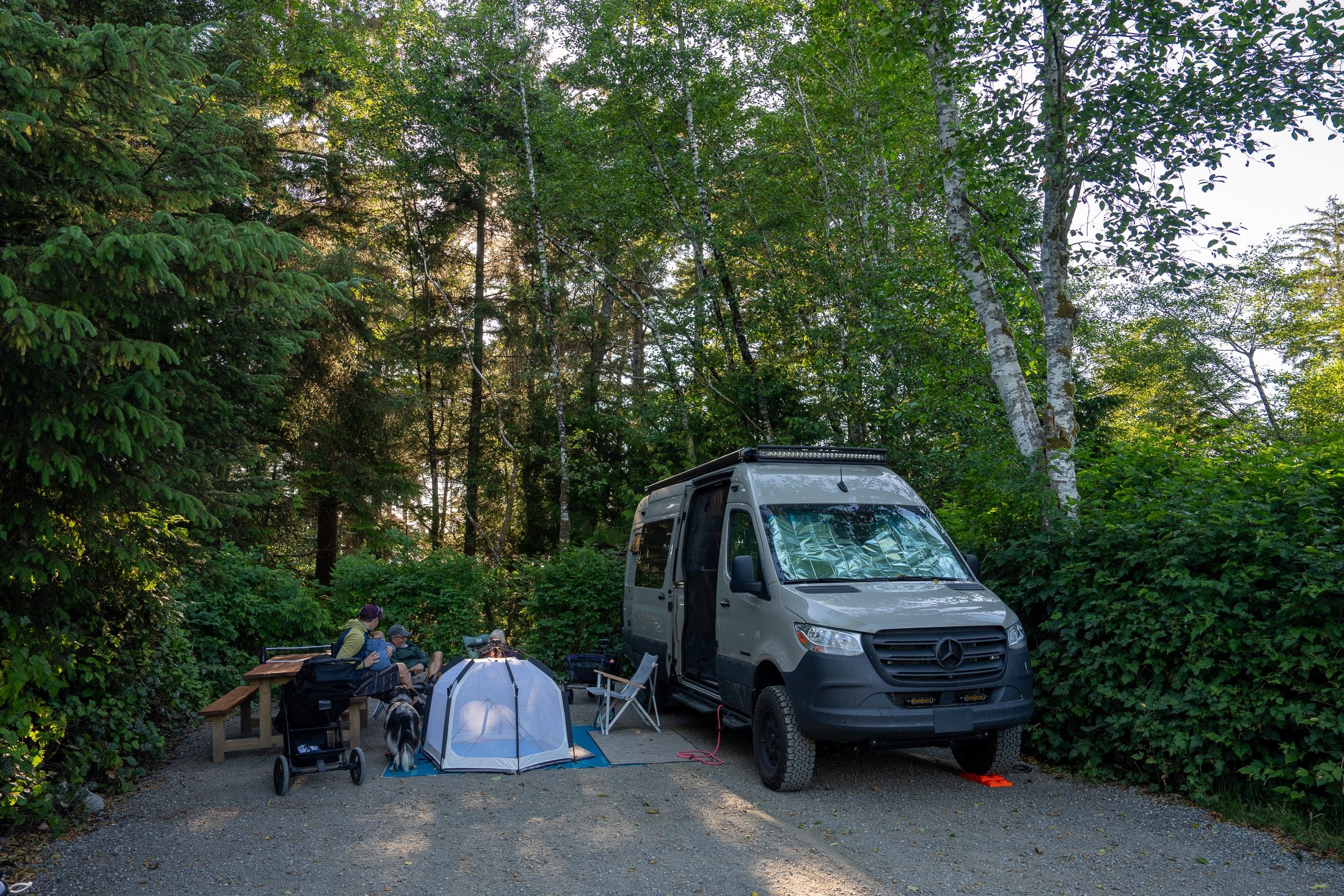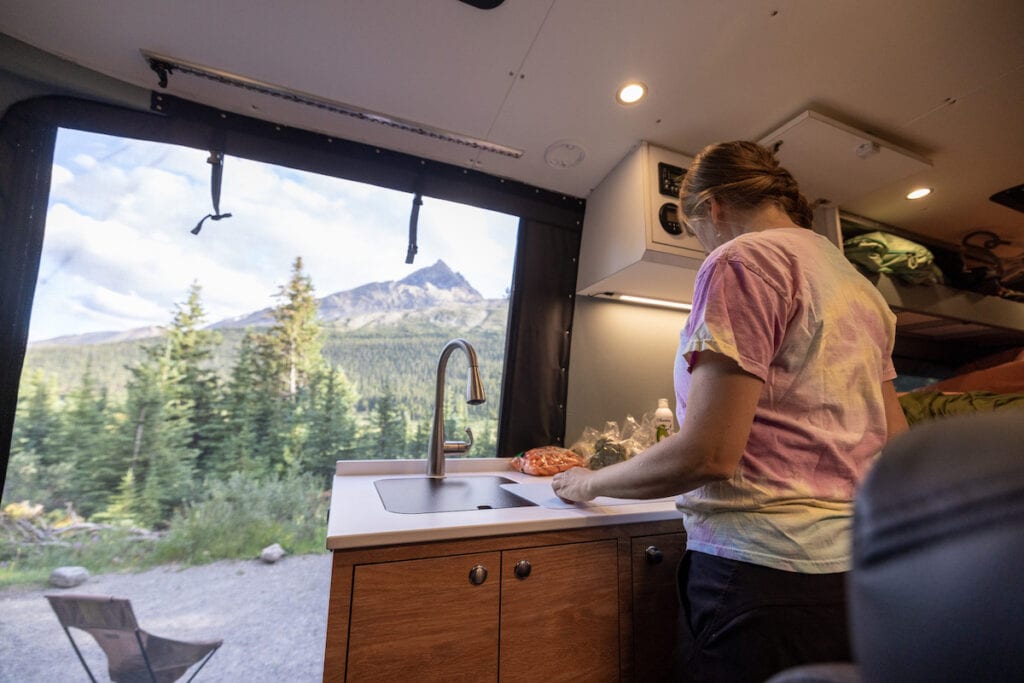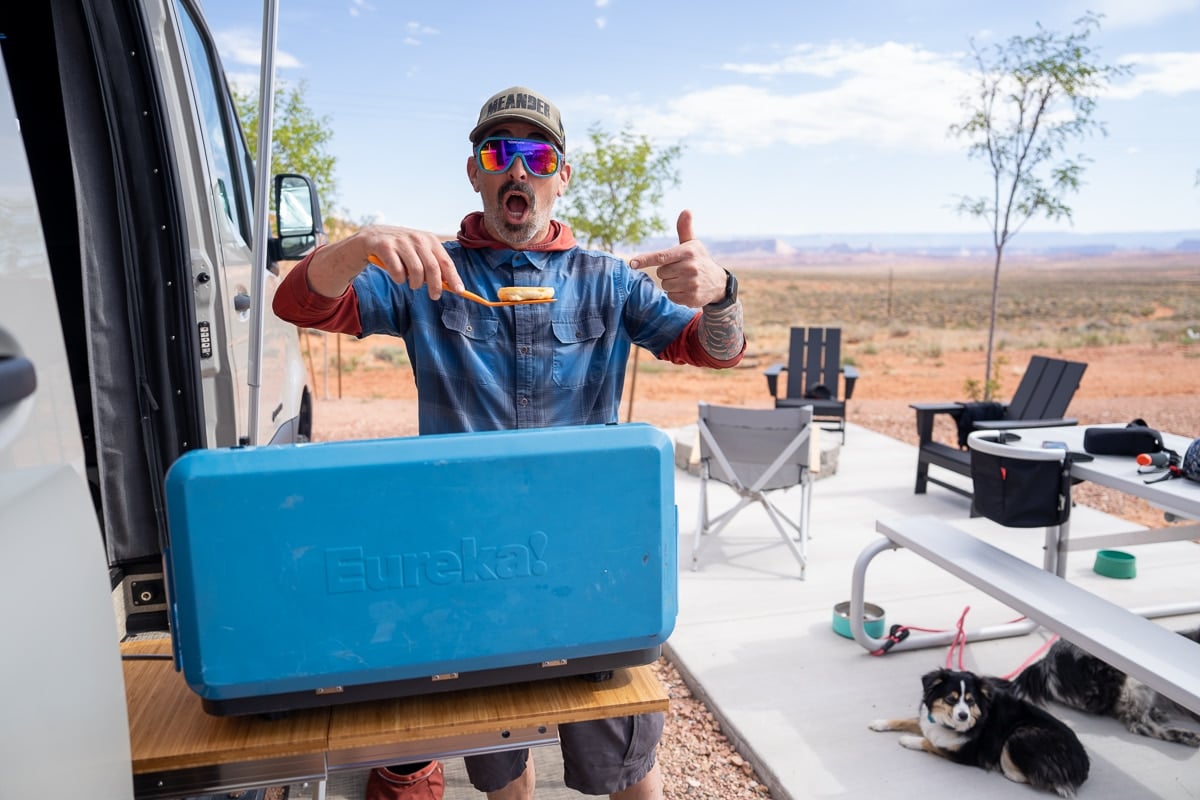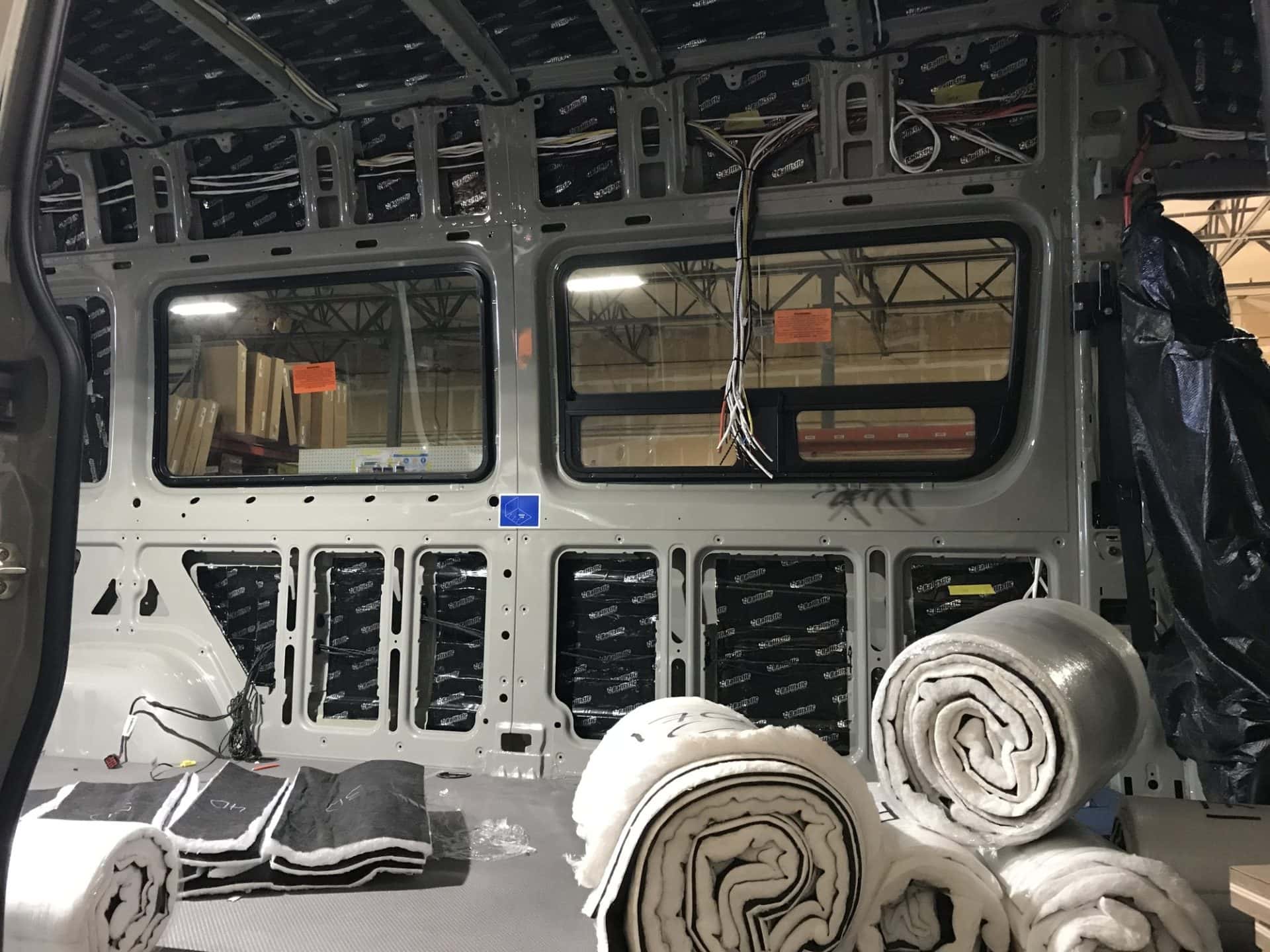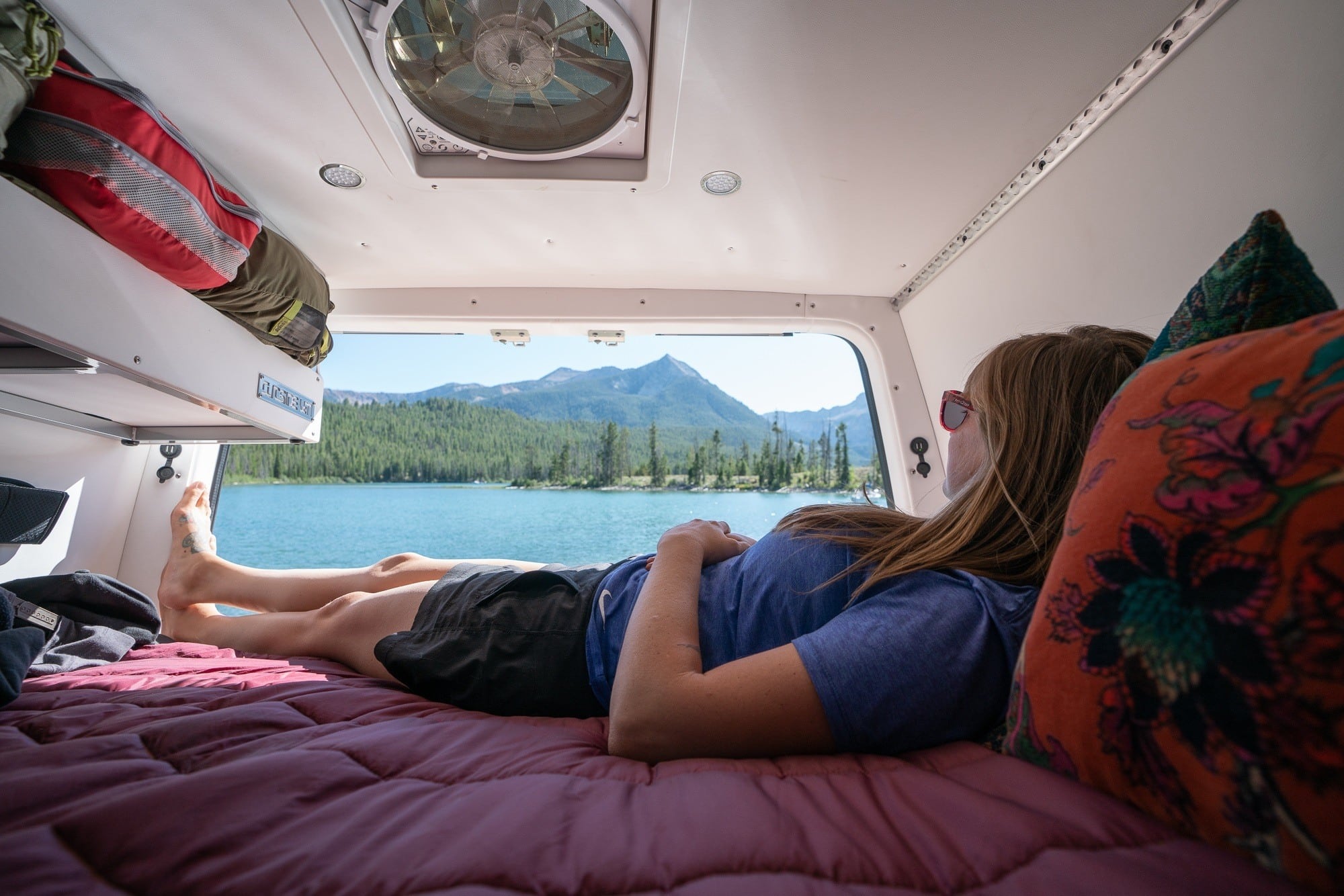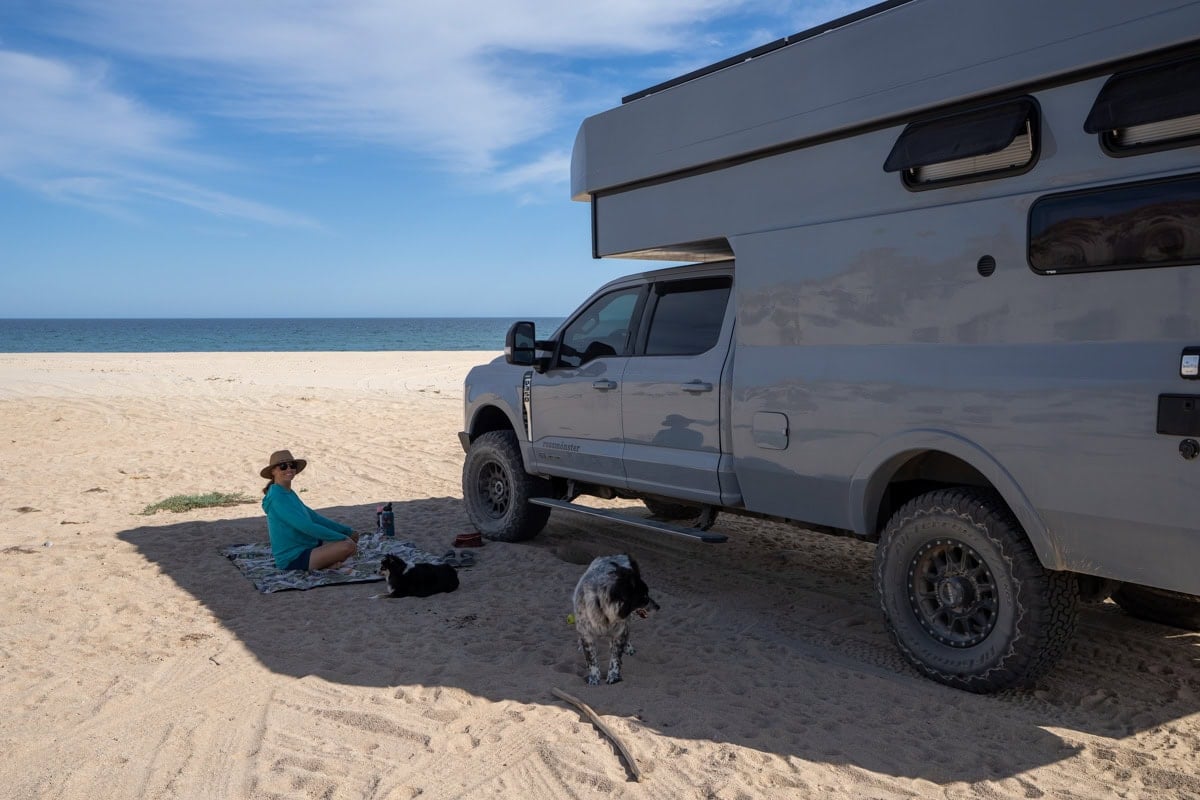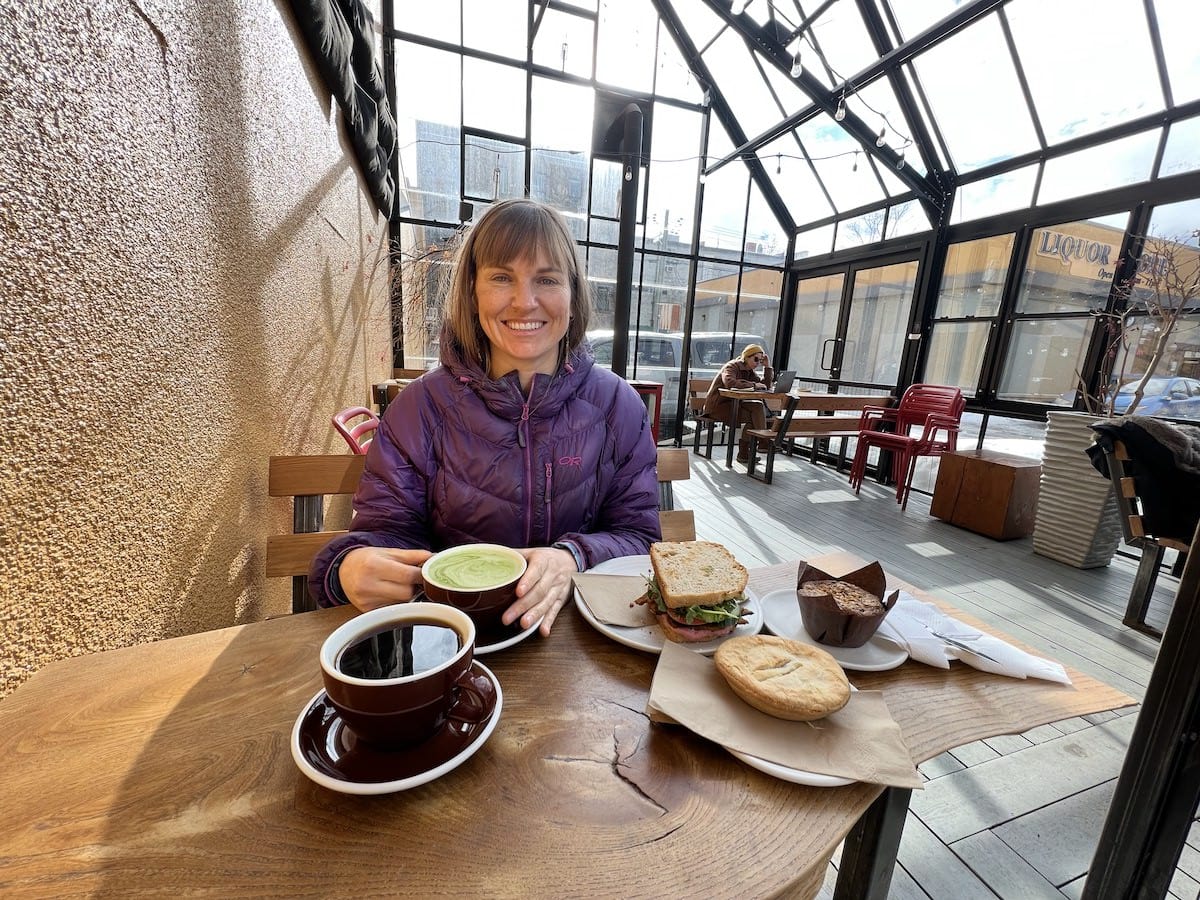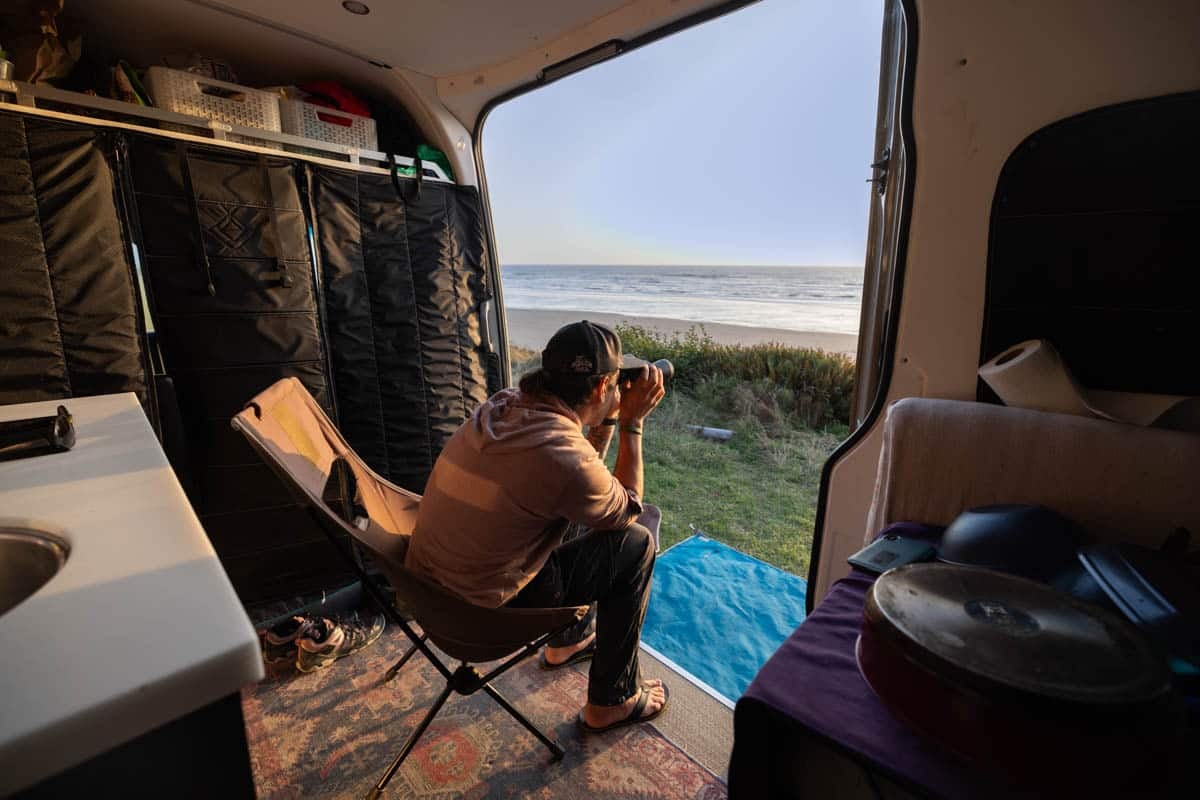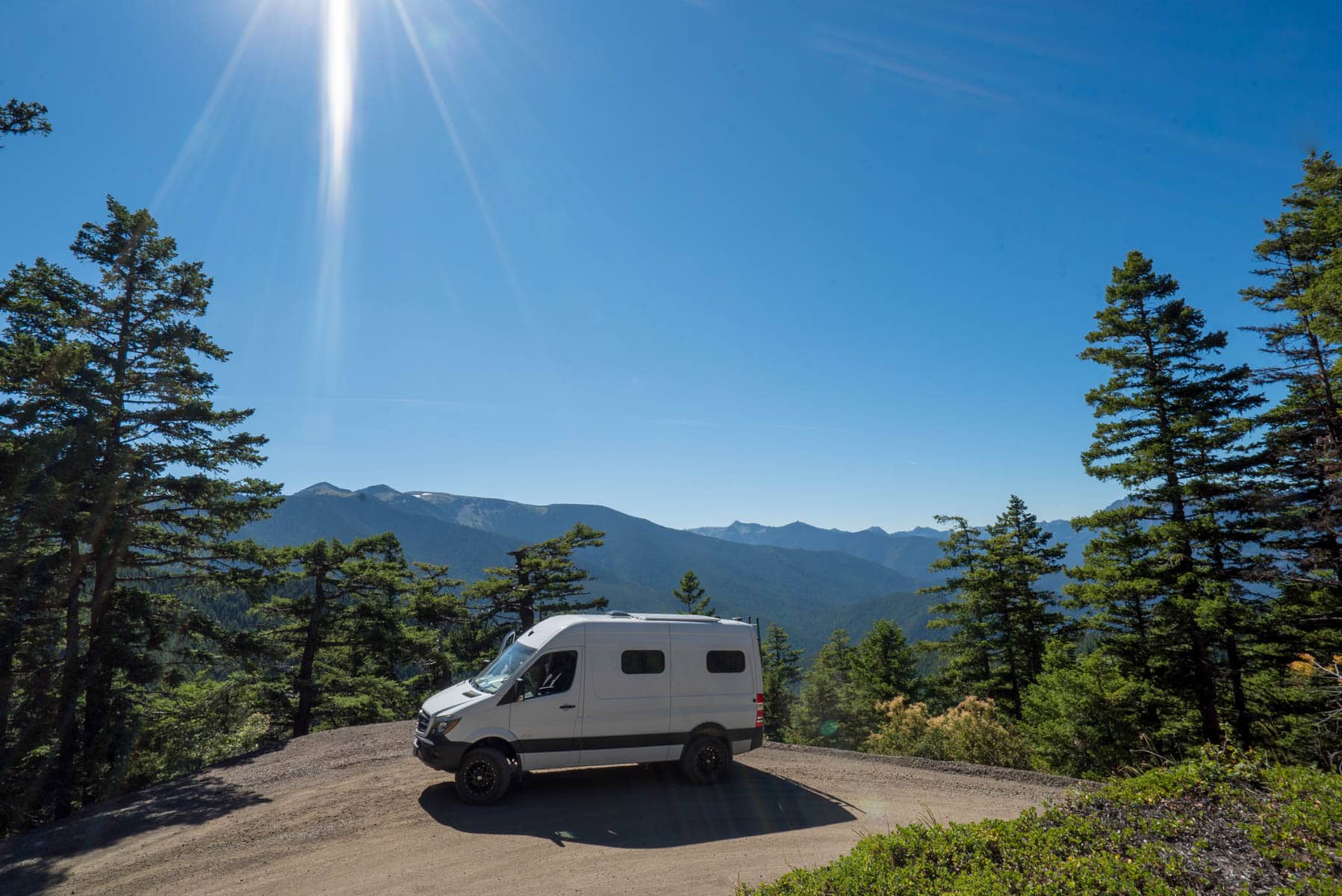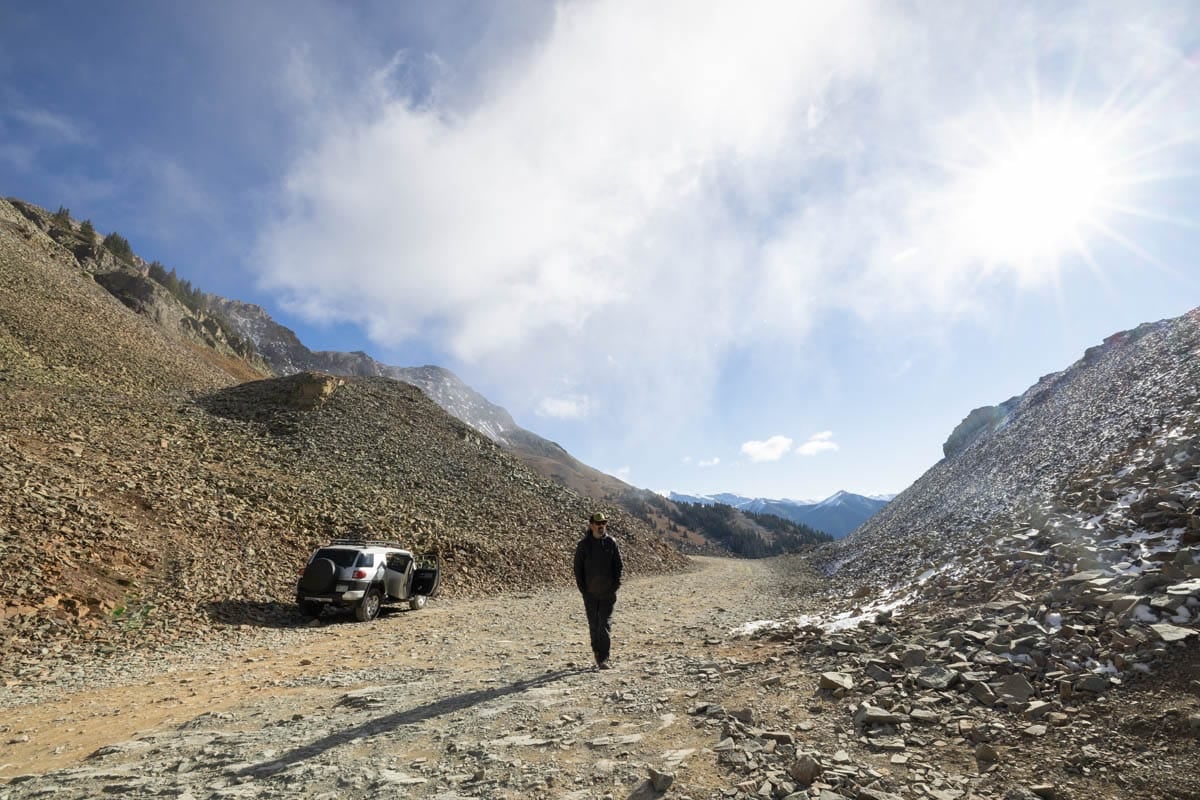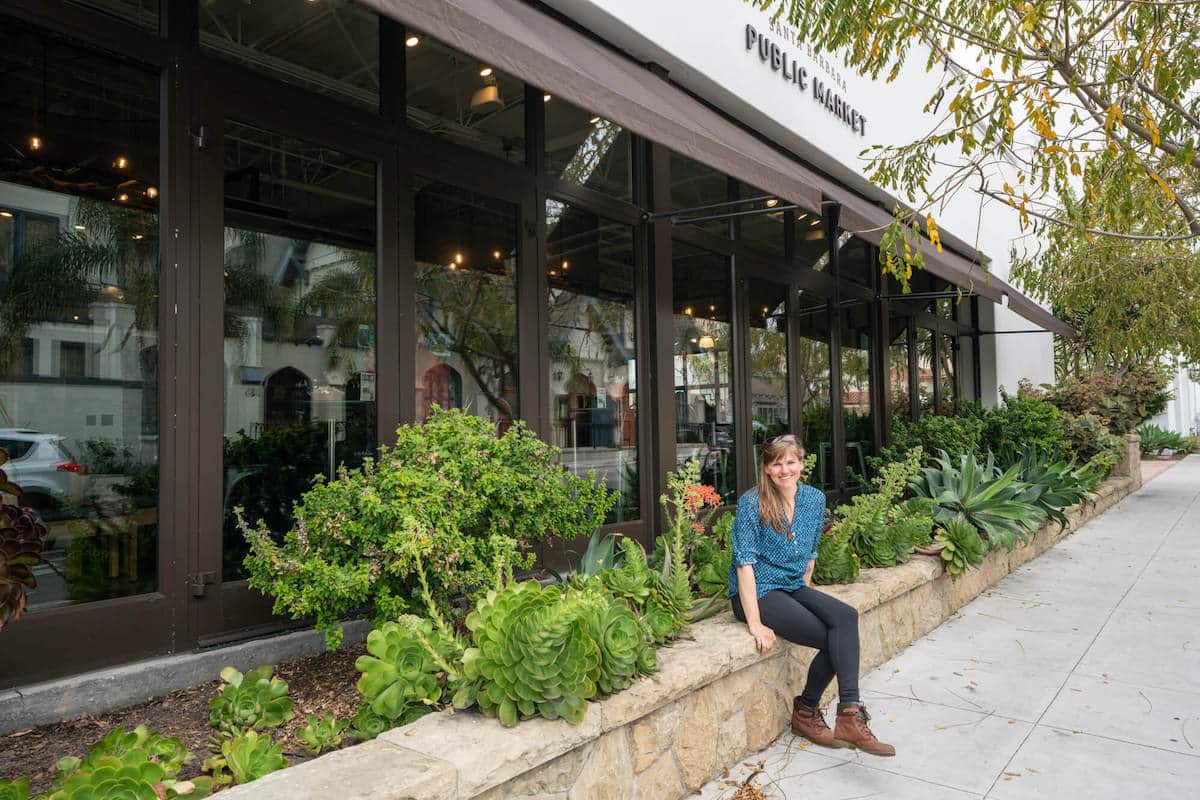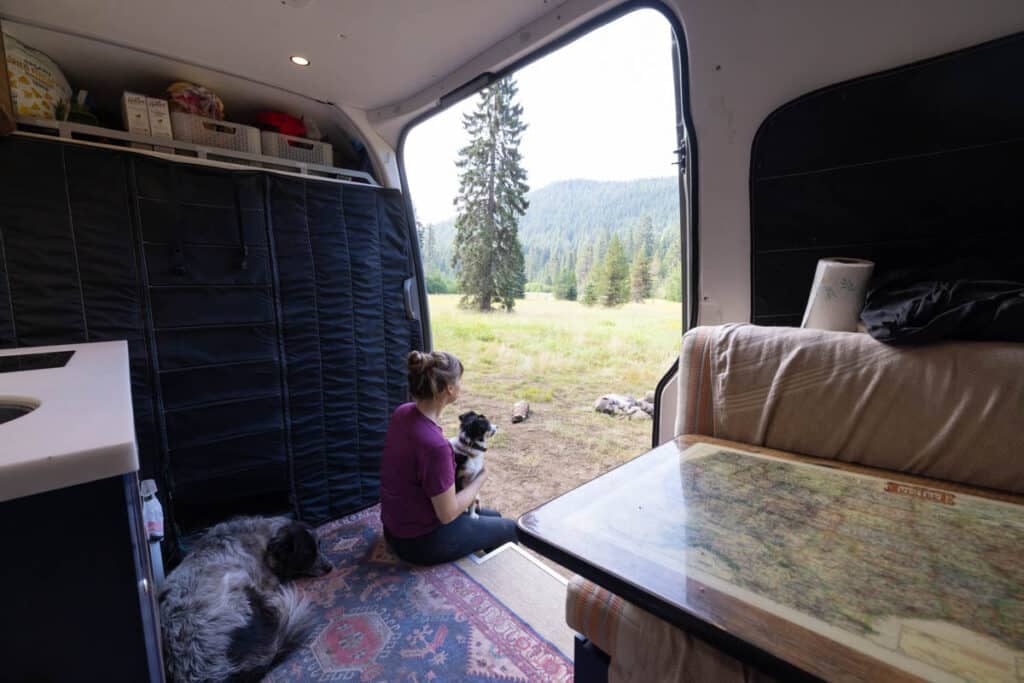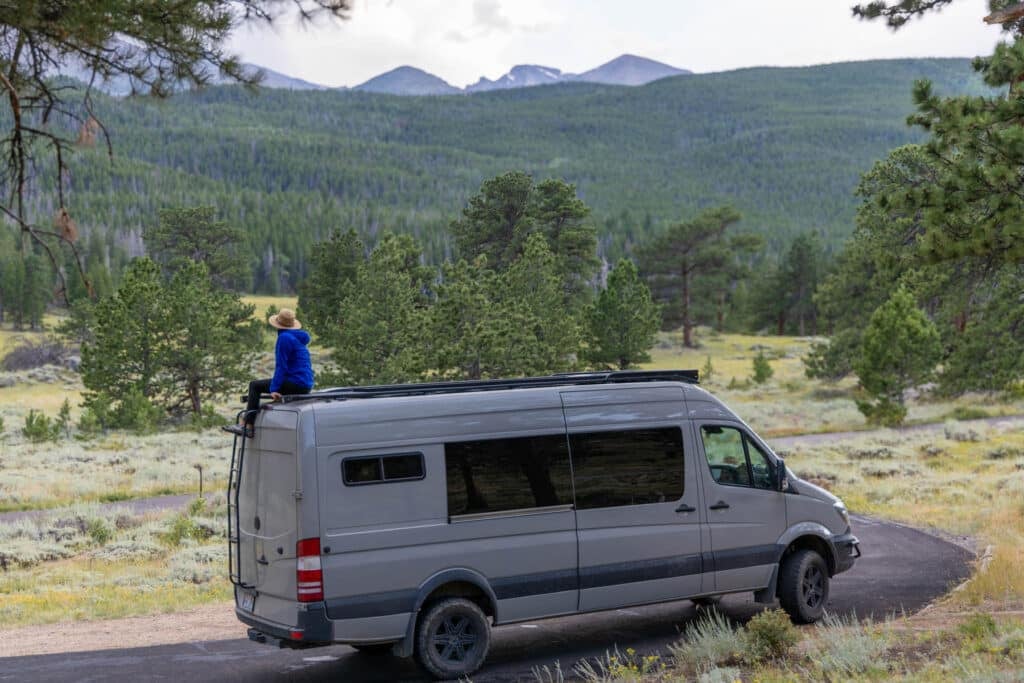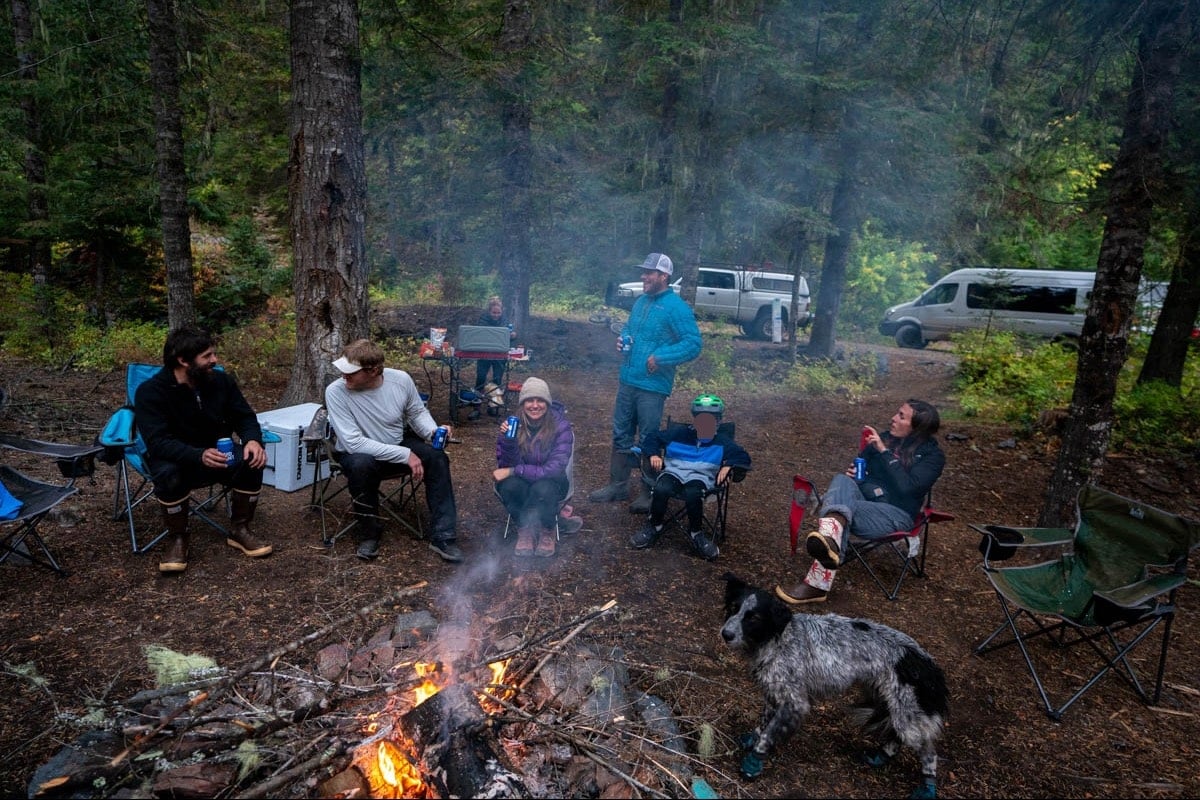13 Tips to Stay Cool in Your Camper Van (Without Air Conditioning)
One of my least favorite parts of van life is being too hot in my van while sleeping, working, or worrying about leaving my dogs in the van while I run errands.
I don’t have a roof top AC unit, which means I’ve had to find other solutions to keep cool during the scorching summer months by doing a combination of things like using window covers, cooking outside, running my fans, and planning my travels carefully.
If you’re like me without air conditioning in your van, these 13 tips will give you some ideas on how to cool off in your van on even the hottest summer days.
1. Visit coastal or high-elevation areas
Although you may have always wanted to visit Arizona, the heart of summer is probably not the best time. When you have the choice, visit cooler regions along the ocean or at high elevations during the summer.
I intentionally plan my route each summer to avoid burning hot climates. I’ve learned through trial and error that my best bet for summer travel is to head high elevation mountainous areas or stick along the coast. You won’t catch me anywhere near the desert or especially hot and humid areas from late May to early September.
Even if you cannot travel to the mountains or the ocean, camping near a body of weather like a lake or river can have a similar cooling effect on the area. You can also get out on the water on a paddleboard, tube, or kayak.
Pay close attention to weather alerts for areas you plan to visit and avoid places with high heat warnings or advisories. I recommend staying flexible during the summer and adjusting your travel plans before finding yourself in an unpleasant situation.

2. Park strategically
One simple thing I do to stay cool in my van is to park in areas with shade coverage whenever possible. Parking my van in the shade can help reduce the interior temperature by 15-20 degrees Fahrenheit.
Sometimes I have to park in direct sunlight if I need solar power from panels on top of my van. In this case, I try to position my van strategically when I park so the slider door faces away from the sun.
When possible, camp on gravel or dirt in the hot summer months versus paved spots at campgrounds or parking lots. Concrete and asphalt absorb heat, meaning you will likely be warmer inside your van.

3. Insulate your van
Insulation doesn’t just keep your van warm in the cooler months – it also keeps your van cool in the hotter months! Of course, you probably insulated your van during the building stage (or purchased your van with insulation from a professional conversion company). You may have 3M Thinsulate (like my Sprinter van) or wool – both are popular and effective materials to insulate vans.
You can insulate your van further with blackout curtains, shades, or reflective window covers. These can reflect the sun and keep the inside cool. Several companies design velcro, snap, magnetic, or stick-on suction window covers for each window of your van, or if you’re crafty, you can make them yourself.
I have insulating window shades from Outside Van to put over the front, driver, and passenger windows, as well as the windows in my living space. As soon as I park at my campsite for the night, I hang up the window covers in the cab area for additional insulation. I also like them because they provide privacy at my campsite in the evenings and keep out the bright morning sun.

4. Use fans
Invest in some quality fans to improve airflow and circulation in your van. These allow cool air to flow into your van while sucking out the hot air.
On the roof of your van, you can install a 12-volt fan that requires a small amount of power (like MaxxAir or Fan-tastic Fan).
Since I don’t have an AC unit in my van, I rely on my two MaxxAir fans for airflow. I have one near the slider door above the galley and the other above the bed, and I can’t believe how big of a difference they make in cooling down my van and maintaining a comfortable temperature.
A cheaper alternative is portable fans, which provide more direct airflow within your van. Even small, battery-powered fans can make a substantial difference next to a cracked window. If you are visiting a dry area, dip a thin cloth in water and drape it over the fan to create a DIY “air conditioner”!
With two fans, you can cool your space even more efficiently and set one fan to pull air in while the other pushes air out. You can also crack open a window to increase the circulation and cooling (as explained in the tip below).
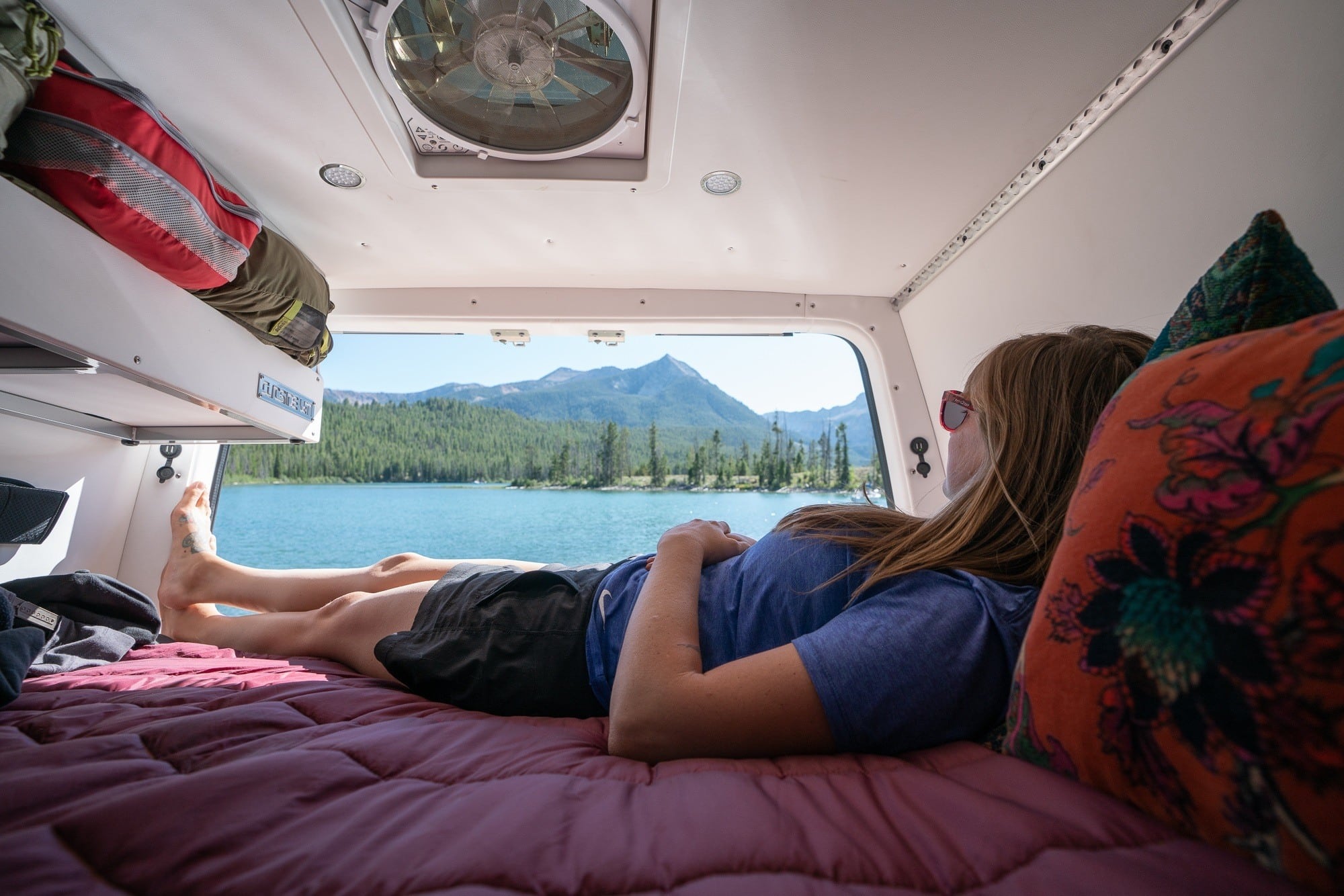
5. Open windows and doors
You can enjoy the sounds of nature and create cross ventilation in your van by leaving doors and windows open. This works well if your windows have screens to prevent insects from getting inside.
On Sprinter vans, the factory windows do not open or vent. Outside Van replaced the front side factory windows in my Sprinter van conversion with CR Laurence Windows.
These windows can pop open to help keep my space cool on hot days. I also have small slider windows on both sides of the bed that vent.
You can purchase bug screens to leave your slider and back doors open without fretting about insects flying in your van. Although you may think opening these doors won’t make much of a difference on a hot day, they can provide much better airflow when your van is stationary.

6. Stay hydrated
If I’m feeling hot in my van, I reach for my water bottle and continue to hydrate throughout the day. When possible, I’ll add ice or chill my water bottle in the fridge before drinking it.
This can help your body cool down while ensuring you don’t experience dehydration. At night, keep your water bottle within reach of your bed so you can continue to take sips as needed.
7. Get out of your van
Avoid spending time in your van during the hottest parts of the day. If you must be inside your van, don’t hang out longer than necessary.
Go outside in the shade. When I’m camping near a water source, I’ll spend the hottest part of the day in the water.
I also consider visiting a public place like a library, coffee shop, or restaurant on days it’s too hot to be outside. If you have a dog (like me) or another pet, find a pet-friendly place to bring them along, too.
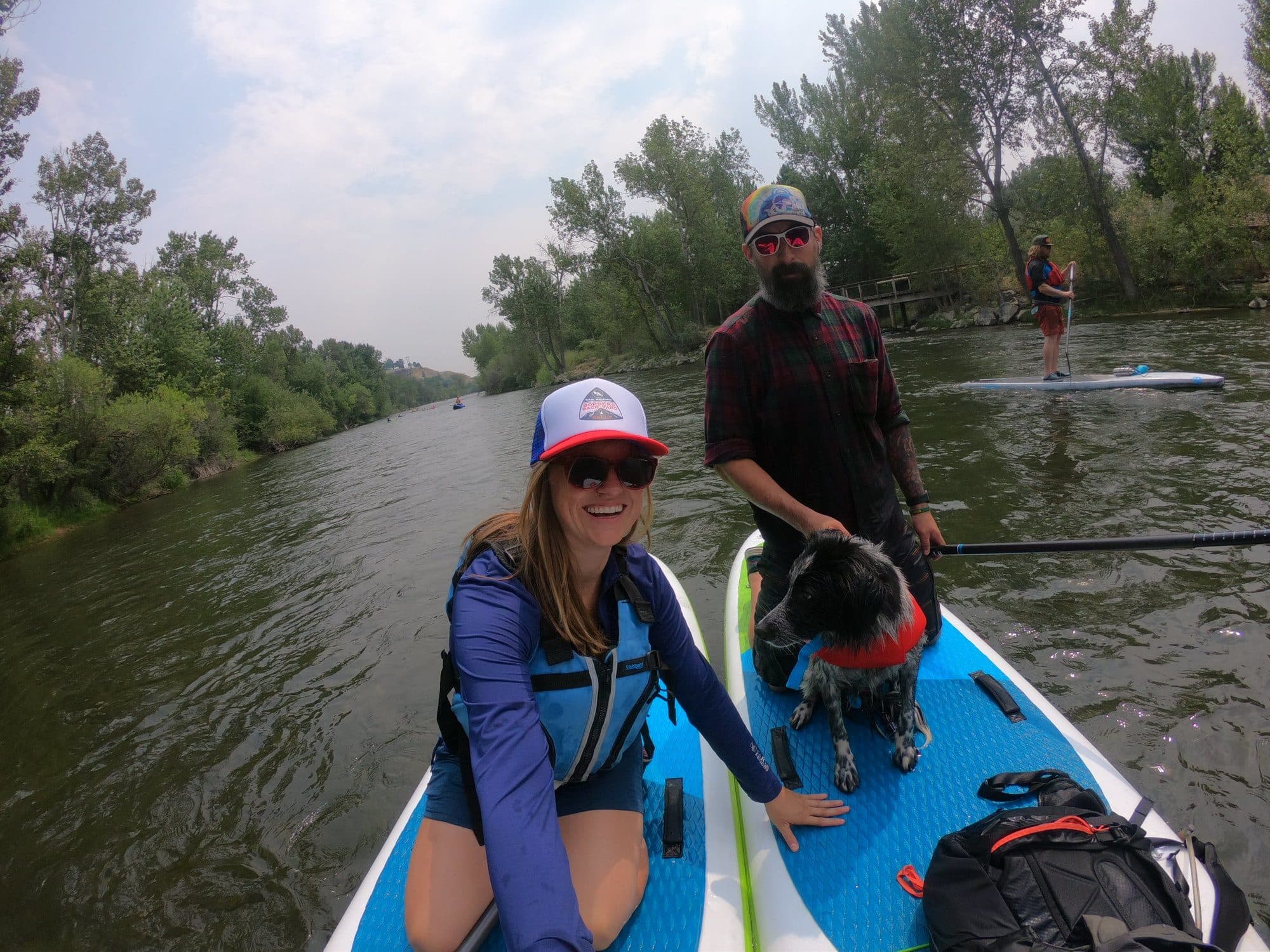
8. Dress comfortably
You can also keep cool by wearing light and breathable clothing. On hot days, ditch the suffocating cotton shirts and reach for clothes made with polyester, spandex, or other sweat-wicking material.
I also like to put my hair up to get it off my neck on hot days. I avoid wearing socks and walk around barefoot inside my van to keep my feet from getting too sweaty.
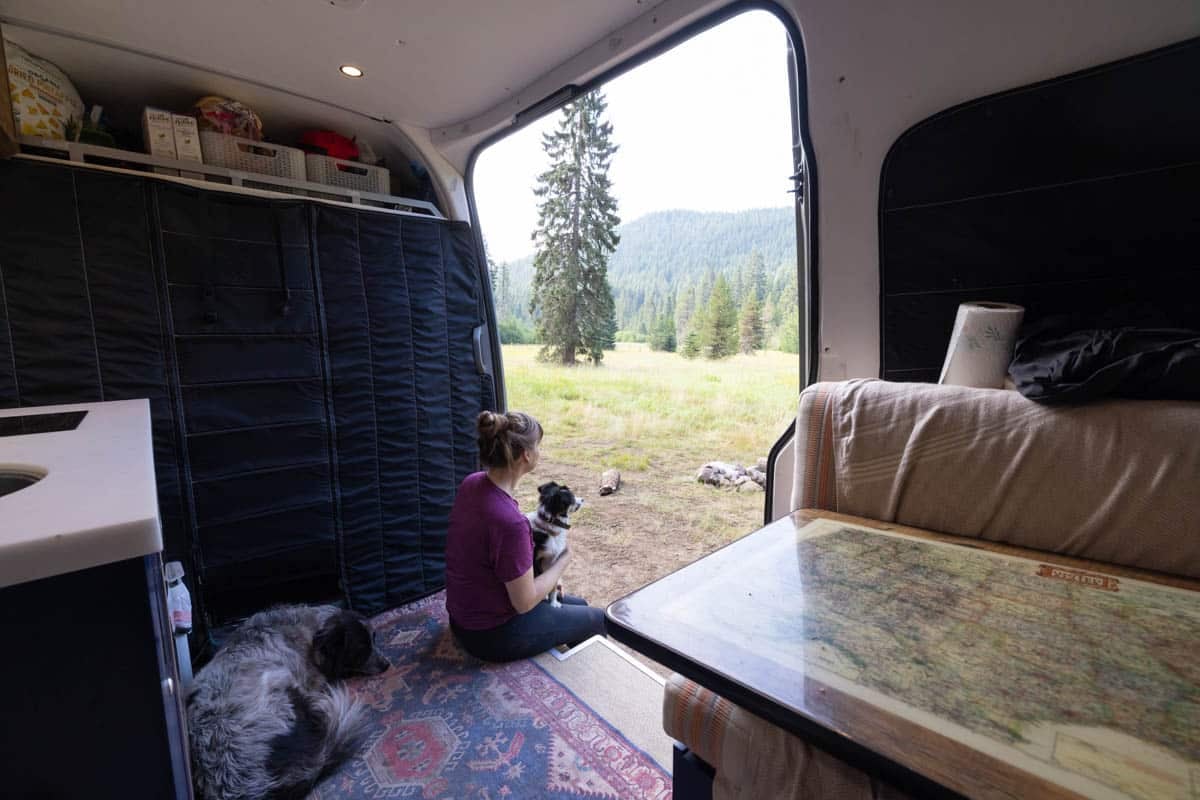
9. Use an awning
When conditions allow, I use an awning or shade structure to get more shade near my van. This also provides a cooler outside space where I can set up a chair to relax with a cold drink or work remotely without sweating.
If you don’t have an awning for your van, consider investing in one that can withstand repeated use. They attach to your roof rack or the side of your van, typically over the side with the sliding door. Remember not to use it if it’s too windy outside as they can snap and break easily.
The Moonshade awning is a great portable option that you can use at festivals and sunny campsites. It is lightweight, compact, and easy to set up. You can read more about it in my Moonshade awning review.
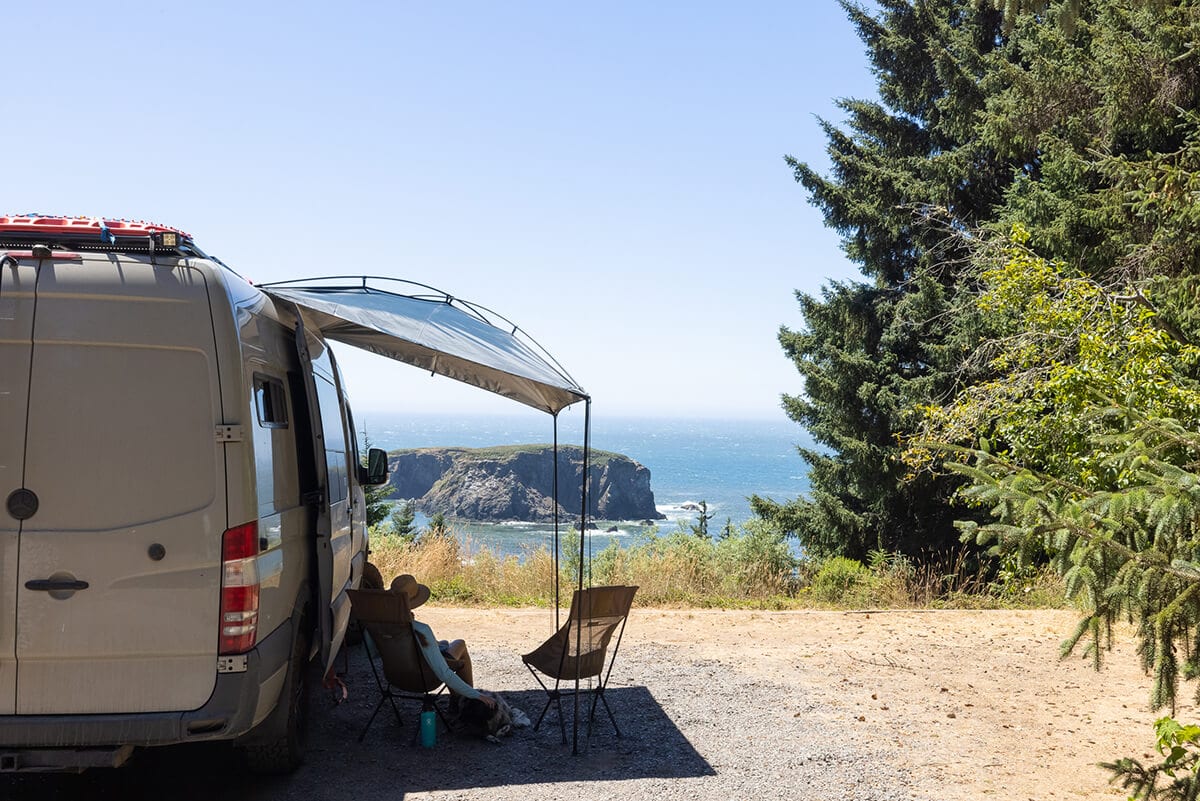
10. Take a cool shower or go for a swim
If your van has an interior shower or exterior spray station, consider taking a cold shower to cool down your body. Even if I don’t want to take a complete shower, getting my hair wet before going to bed on a hot night can help me feel cool enough to fall asleep.
You can also use public showers or jump in a natural body of water to cool down. These are convenient when you have the option because they allow you to conserve water in your van.
11. Adjust your sleeping conditions
You can make some simple changes to your bed to make it feel cooler for sleeping. One idea is to purchase breathable bedding or a portable fan to point directly at you while you sleep.
Most recently Ryan and I got rid of our top sheet to reduce the amount of covers we sleep under in our van.
You can also get a cooling gel-infused pad for the top of your mattress to help your body stay cool at night.
12. Cook outside
Using your induction or propane stove inside your van on a hot day emits more heat into your living area. If possible, cook outside with a portable camp stove.
Don’t feel like cooking? Depending on your proximity to town, a hot day might be a good excuse to grab a meal at a local restaurant with air-conditioning.

13. Install an air conditioner
If you’ve tried these tips and still feel unbearably hot in your van, consider installing an air conditioning unit. A 12-volt AC unit cools your space even when the van isn’t running. The trade-off is that it requires a substantial amount of money and power.
If you install an AC unit, you must also invest in a generator, a robust power system, or stick around campsites with shore power. You won’t be able to run the air conditioner nonstop, but you can run it for a few hours to cool down your space to a pleasant temperature.
While I didn’t install an AC unit in my latest Sprinter Van, if I were going to build out another camper, I’d definitely consider it, especially now that my son needs to nap in the middle of the day. An AC is also nice if you have pets and want to do activities that they can’t always join you on.
A portable AC option is the Zero Breeze Mark 2 AC, a portable air conditioner designed for compact spaces. It runs for 3-5 hours on a single charge or can be used with a 24-volt battery supply.
Compared to other air conditioners, the Zero Breeze Mark 2 uses only one-fifth of the power (240 watts). It can drop the temperature by 30 degrees Fahrenheit in 10 minutes. It does need to be vented to the outside of your van, but it doesn’t require permanent installation like a rooftop AC. I got to try it at the Overland Expo, and I was impressed with how effective it was.
Frequently Asked Questions
If you want to leave your dog in the van to run an errand and worry about them getting too hot, it’s important to cool down your van (and keep it cool) while you’re gone. Crank the vehicle’s AC so the ambient temperature starts off as cool as possible before you leave them in there. Then run the fans on max and crank the windows.
In addition to following the tips on this list, you can also get a cooling mat or damp towels for your dog to lay on, which can help lower their body temperature. If you aren’t able to do this, you could put frozen water bottles or ice packs wrapped in towels for your dog to lean against.
Finally ensure they have plenty of water, and avoid leaving them alone in the hottest parts of the day. They also make RV temperature monitors so you can track the temp in your van while you’re away if you’re worried about your dog becoming too warm. For more tips, visit my post on van life with dogs.
There are many things you can do to keep your camper van cool during the day when temperatures are at their highest and the sun is out in full force. A few of my main tips are to use reflective window covers to block out the sun, park in the shade, insulate your van, and turn on fans while the windows are open to improve ventilation. By doing these, your van should stay cool during the day!
Ceiling fans and window screens can work together to improve airflow and circulation in your van. If you have two ceiling vans, you can set one to pull air in and the other to push air out. Keep the windows all the way open and install screens to keep bugs out. I’ve found that the combination of fans and windows keeps the interior of my van comfortable in most cases, which is why I’ve never needed air conditioning!
More Van Life Tips
Save this post to Pinterest
How do you stay cool in your van? Add your best tip to beat the heat in the comments below.
The post 13 Tips to Stay Cool in Your Camper Van (Without Air Conditioning) appeared first on Bearfoot Theory.



